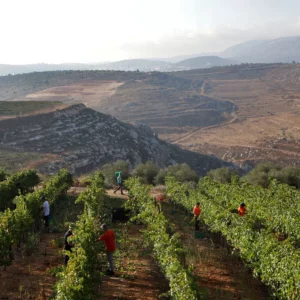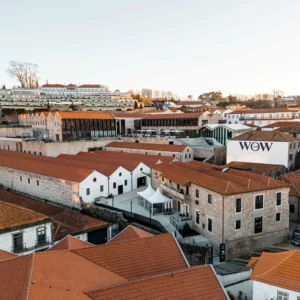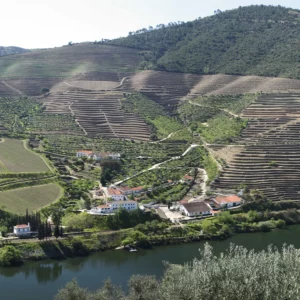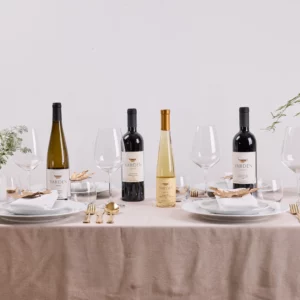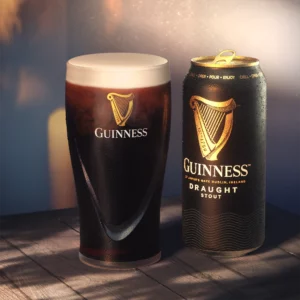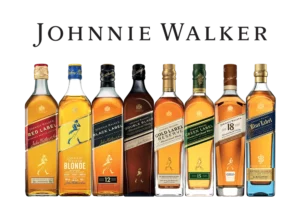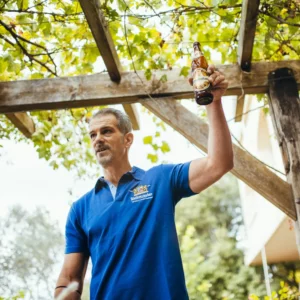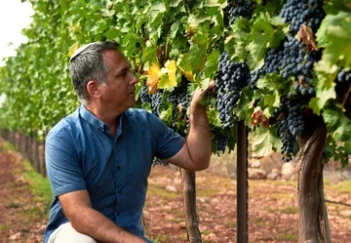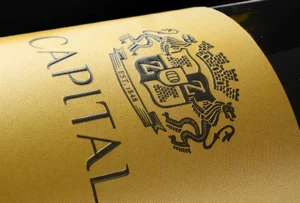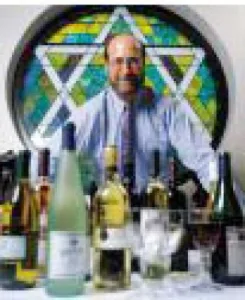We are about to celebrate our 75th anniversary as a country. Once, for those abroad, Israel was symbolized by the Jaffa Orange and the Kibbutz. Today, Israel is today regarded as the Start-Up Nation. Hi-Tec is what the country is most known for, and the most representative product of the “Land of Israel” and “People of Israel” is wine. After all you can’t give a bottle of Hi-Tec as a present.
Our wine history may be divided in to two parts: Pre-1976 and post 1976. In that year the roots of the Israel wine revolution were planted. It was the year vineyards were first planted on the Golan Heights and Israel’s first international style wine was produced. These unconnected events were a turning point.
This article first appeared in the Jerusalem Post.
I have selected ten wines which in my opinion, best tell the Israeli wine story.
PALWIN No. 10 1950s. At the founding of the State of Israel in 1948, most of the wine drunk was liquid religion, that is to say sweet red wine. Palwin was an abbreviation of ‘Palestinian wine.’ It was sold by the Palestinian Wine & Trading Company founded in 1898 in London. It was Israel’s first wine brand. Before the State was founded there were many Palwin wines, each with its own number. These were to make it easier for new immigrants to identify. After the establishment of Israel four survived, and the biggest brand was the No.10. Palwin was so dominant in Great Britain that Brits grew up thinking it was part of Judaism.
CARMEL HOCK 1960s. Come the 1960s, Carmel Hock became the largest selling wine. It was sold in a tall slim bottle. The wine was semi dry, or maybe even a little sweeter than that. Older folk will remember adding sparkling soda water to their Carmel Hock to make a spritzer.
CARMEL CABERNET SAUVIGNON SPECIAL RESERVE 1976. Carmel sold the first varietals made from Cabernet Sauvignon and Sauvignon Blanc in the late 1960s. Grenache Rose and Adom Atik were the big sellers. However in 1976, they produced a wine aged in small oak barrels for the first time. The winemaker Freddie Stiller had no budget for oak barrels for wine, but the winery sold a great deal of brandy in those days. He cheekily decided to switch some of his limousin oak barrels reserved for brandy to age his precious wine. Believe it or not the grapes came from a vineyard in Rishon Le Zion, though it was not long before the vineyards were grubbed up, as it was realized real estate was more profitable than growing grapes. The next in the series, the 1979, came from a Galilee vineyard. The wine had a picture of Baron Edmond de Rothschild on the label and it was sold in wooden cases like a top quality international wine. The wine was still alive after twenty years.
YARDEN CABERNET SAUVIGNON 1984. The Golan Heights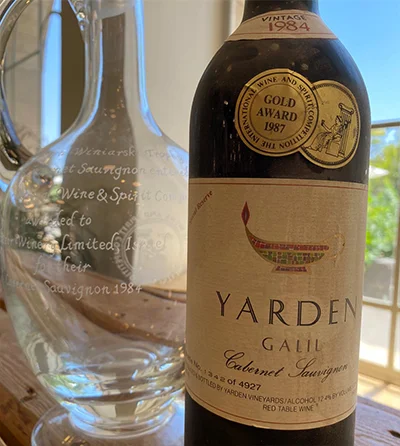 Winery was founded in 1983. Their Yarden Sauvignon Blanc 1983 was in America called “Israel’s first world class wine.” Later, their Yarden Katzrin 1990 was Israel’s first icon wine. However, the wine that made the most noise was the Yarden Cabernet Sauvignon 1984. In 1987, this wine won not only a Gold Medal but also the Winiarski Trophy as the best red wine in the IWSC in London. Peter Stern the wine consultant to the Golan Heights Winery had walked the Ramat Naftali vineyard picking the best lots to go into this wine. It was a triumph for him and winemaker, Andy Starr. It was an astonishing result and the first of many awards for Yarden, which put Israel firmly on the international wine map. Yarden Cabernet Sauvignon became Israel’s most famous wine in international wine markets.
Winery was founded in 1983. Their Yarden Sauvignon Blanc 1983 was in America called “Israel’s first world class wine.” Later, their Yarden Katzrin 1990 was Israel’s first icon wine. However, the wine that made the most noise was the Yarden Cabernet Sauvignon 1984. In 1987, this wine won not only a Gold Medal but also the Winiarski Trophy as the best red wine in the IWSC in London. Peter Stern the wine consultant to the Golan Heights Winery had walked the Ramat Naftali vineyard picking the best lots to go into this wine. It was a triumph for him and winemaker, Andy Starr. It was an astonishing result and the first of many awards for Yarden, which put Israel firmly on the international wine map. Yarden Cabernet Sauvignon became Israel’s most famous wine in international wine markets.
SELECTED EMERALD RIESLING 1990s. The largest selling wine in the 1990s was Carmel’s Selected Emerald Riesling. This was a cross between Muscadelle and Riesling developed by UC Davis in 1948, the year Israel was founded. It did not succeed anywhere but Israel, where it became a phenomenon. Emerald Riesling was a semi dry white wine and it introduced many people to wine, like Liebfraumilch in Britain and Lambrusco in America. The winemaker of Carmel was Israel Flam, the father of the Flam brothers, who today run one our finest wineries. Selected is a fifty year old brand and still a leader in the mass market
MARGALIT CABERNET SAUVIGNON 1993. The 1990s was the beginning of the boutique wine revolution. Margalit Winery was the first quality boutique winery founded in 1989 and the 1993 was their best of the decade. This illustrated that small wineries could make high quality wines and it encouraged many winemaking hobbyists and growers to start making wine more seriously. Dr. Yair Margalit was the owner winemaker. He also was a consultant to other new small wineries. For me this wine represents the boom of small wineries that followed.
YARDEN BLANC DE BLANCS NV. The Golan Heights Winery made traditional method sparkling wines, creating a category that did not exist in Israel. In 1996 this wine won the ‘Schramsberg Trophy for the Best Bottle Fermented Sparkling Wine’ at the IWSC in London. It was a great reward for the winery’s investment in quality. The wine even in those days was a vintage wine, and after this award, it was sold with the vintage year on the bottle. This was Victor Schoenfeld’s baby. When he joined the Golan Heights Winery in 1991, he went to France to learn the secrets of the Champenoise. This was the result and it became one of the outstanding wines of the country …and won many more awards.
CASTEL GRAND VIN 2003. Domaine du Castel has had so many great wines and the winery’s Grand Vin and C Blanc du Castel have in numerous forums been Israel’s leading red and white wines. I chose this one because it was Castel’s first totally Kosher vintage….and the winery won more awards when Kosher than before. This was therefore the wine that slayed the holy cow that Kosher wines were somewhat inferior. The Grand Vin was a Bordeaux style blend. Most of the best wines were previously varietals and it was a wine helped to pioneer the Judean Hills Wine Region. Eli Ben-Zaken the founder, owner-winemaker, with attention to detail, perfectionism and professionalism, taught Israeli wine about quality, style and aesthetics.
YARDEN MOUNT HERMON RED 2000s. In the early 2000s Mount Hermon Red, now under the Hermon label, became Israel’s largest selling wine. This confirmed the change in popularity from white wines to red and also illustrated that the quality revolution had arrived in the mass market. As they say, to make a fine wine of only 10,000 bottles is comparatively easy. To make 100,000 bottles of a less expensive wine is really challenging. Well, at one stage Victor Schoenfeld, the winemaker of the Golan Heights Winery, was producing a million and a half bottles of this wine.
VITKIN CARIGNAN 2008. Assaf Paz was a winemaker who saw an old vine vineyard of Carignan previously used for producing grape juice and Kiddush wine, and decided with the right TLC he could make a really good wine. As such Carignan, the ugly duckling of Israeli winemaking became a beautiful swan. The first was made in 2002, but the 2008 was an excellent vintage. Vitkin’s Carignan was the catalyst that made wineries look at our heritage varieties, like Carignan and Petite Sirah again, and encouraged more use of the Mediterranean varieties. Assaf Paz’s vision and courage to follow his hunch, encouraged the whole industry to change direction.

TZORA SHORESH 2013. This was a single vineyard white wine of extraordinary intensity and minerality, from the Shoresh vineyard, high up in the Judean Hills. For me it represents a number of things: the revolution in the quality of white wines, the new focus on precision viticulture and the new search for identity. Tzora’s wines are named after the region, the vineyard and a single plot, moving the focus from the variety to where it is grown. As such they symbolize for me the idea of making wine with a sense of place. The winemaker-CEO of Tzora Vineyards is Eran Pick, Israel’s first Master of Wine.
Finally, an either/or. It is too early to judge the wines that will have most effect in the 2020s, so here I hedge my bets.
SPHERA WHITE SIGNATURE 2022. A white wine made by Israel’s ultimate white wine specialist, Sphera Winery. This wine is so precise, minerally with a great core of acidity. Most Israeli whites have tropical fruit flavors that dominate, but the mouth feel disappears. This wine stays with you through to a long finish. It is hard to believe we are making white wines like this in Israel. A beautiful expression of winemaker, illustrating Doron Rav Hon’s philosophy. This is a wine to measure the coming decade by.
RAZI’EL 2020. This is a focused, tight, elegant Mediterranean style blend, made from Syrah, Grenache, Mourvedre and Carignan. It is made by the Ben Zaken family, owners of Domaine du Castel. Israeli wines at the top level have been dominated by Cabernet Sauvignons, Bordeaux style blends or blends of Cabernet Sauvignon with Mediterranean varieties. This is a Med blend which has received the highest third-party recognition for a relatively new winery. Maybe, it is a signpost for the future. Time will tell.
On the substitute’s bench are Yarden Cabernet Sauvignon 1985, Yatir Forest 2003 and Carmel Kayoumi Shiraz 2006; Three very successful wines I was personally involved with, which each received milestone recognition. I nearly added the Recanati Rose 2007 too. They were pioneers in high end rose, putting it in a nice bottle and pricing up. It opened the way for a new category of quality rose. The Cremisan Monastery Hamdani Jandali 2011 was the first wine of indigenous varieties to gain notice. The Segal Argaman 2008, was the first award winning Argaman, an Israeli variety. I am conscious I have not named a dessert wine. The Yarden Sauvignon Blanc Late Harvest 1988, a unique one-off and Yarden HeightsWine 2008, winner of the Grand Gold in Vinitaly, were the very close candidates. In the end all these did not make the list not because they were not worthy, but because they did not for me represent the decade like the wines I selected.
So, here you have it. Ten wines to represent the seventy five years of Israel. These are not necessarily the best wines, nor the ones that won the most awards, but for me personally they represent the era they were part of, and help to tell our wine story.
Adam Montefiore is a wine industry insider turned wine writer, who has advanced Israeli wines for 35 years. He is referred to as the English voice of Israeli wine and is the wine writer for the Jerusalem Post. www.adammontefiore.com



